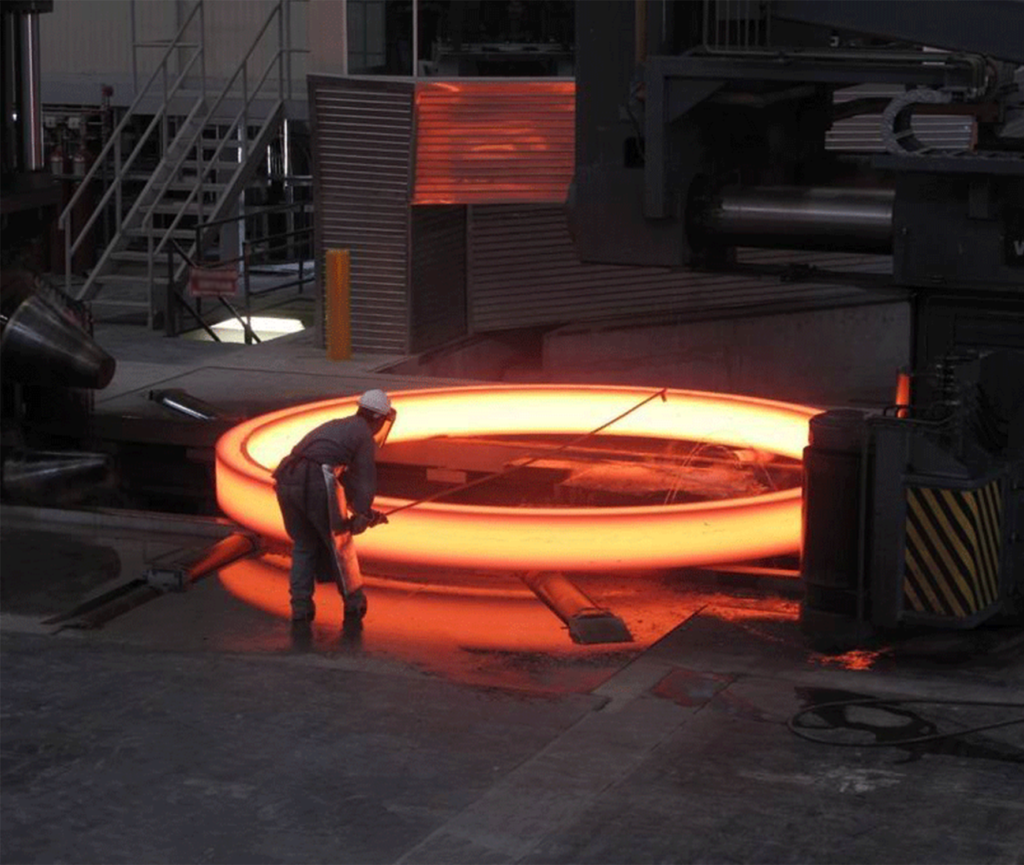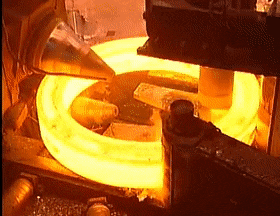What Is Rolled-Ring Forging?
Rolled ring forging starts with a workpiece that has already been pierced giving it a hollowed-out “doughnut” shape. Once the piece is heated, it will undergo opposing forces from a driver roll, idler roll and axial rolls which are simultaneously rotating. The workpiece is then placed on an idler roll, and slowly moves toward the driver roll— which will begin to increase the diameter of the metal and cause the wall thickness to reduce. The axial rolls control the desired height of the ring. The process produces a seamless rolled ring that can be used for a myriad of products such as gears, valves, clutches and bearings.
Benefits of Rolled-Ring Forging:
- Stronger than other components as they maintain strength through high temperature fluctuations
- Less machining = lower cost, as rings closely match the contour of the finished shape
- Grain pattern used in making them yields high strength and resistance compared to other components
- Easier to predict how rolled rings will react to heat
- Versatility in materials used
Contact us today to get your forging process started!






